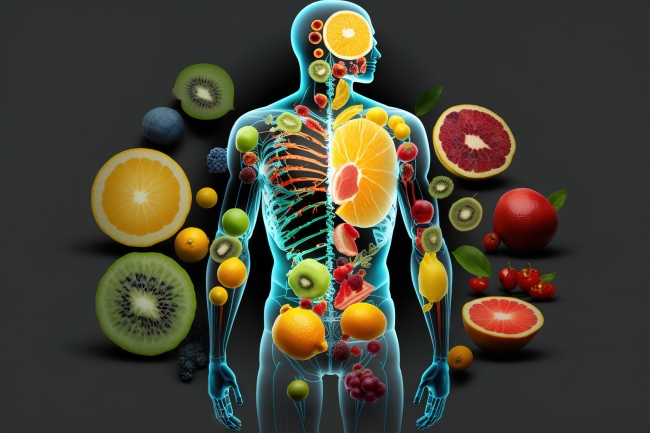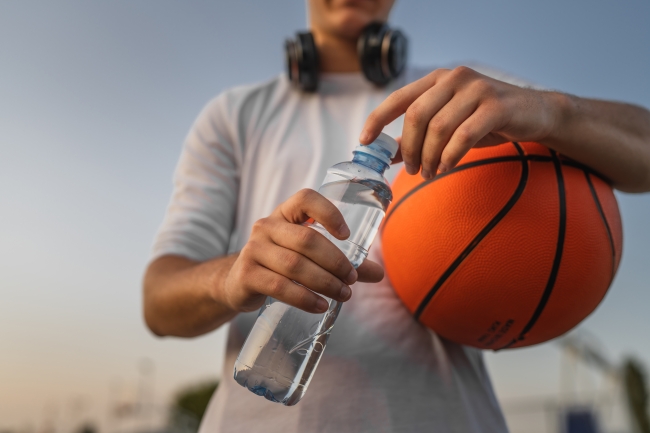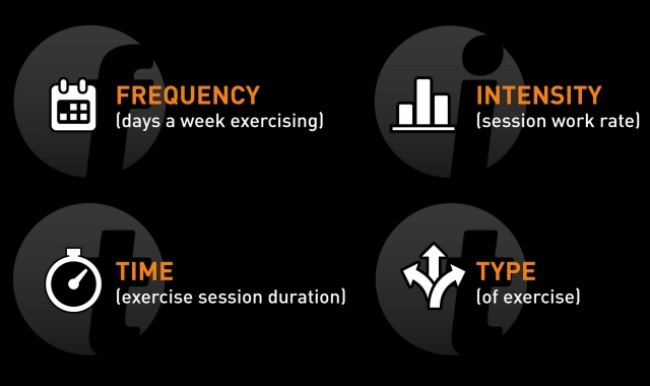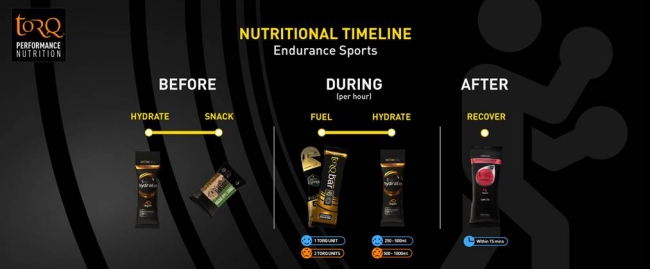Here we consider adolescent nutrition and offer advice on how to correctly support aspiring youngsters through this rapidly changing time of physical and mental growth. Alongside this, we consider how they should fuel their much loved sporting activity.
The benefits of exercise on health across all age ranges is clear. Regular exercise will support development of muscle mass, cardiovascular health, regulation of blood sugar (insulin sensitivity), bone density, as well as mental health and cognitive development. Whilst this showcases the physical and psychological benefits of exercise, there are also social benefits which include supporting the development of self-identity and self-esteem. Whilst the first decade of a child’s life may focus on play and development of motor skills (walking, running, co-ordination), the second decade will be significantly more explorative as they begin to refine their attention to the skills and the requirements of the sports that they enjoy, in order to improve & develop their capabilities.
Understanding the Energy Requirements of Youth Athletes
As sporting passions start to develop, so does their commitment to the sport and with that comes a requirement to adjust the daily diet to meet the amount of energy being expended. If a chronic negative energy balance occurs i.e. more calories being used than consumed over a sustained period of time (months), a number of potential negative health and performance implications could arise, ranging from:
- Stunted Growth
- Delayed Maturation
- Menstrual Cycle Irregularities
- Low Bone Density and Strength
- Increased Risk of Injury
It’s important to remember that during puberty, a vast array of developmental changes are taking place, such as changes in body composition (increase in muscle mass and reduced fat mass), metabolic changes (the way the body breaks down nutrients to produce energy), hormone fluctuations, maturation of organs such as the brain, and an increase in bone size and density. Importantly all of these changes require energy to evolve.
There are 4 factors that we should consider when estimating the energy needs of young sports people:
- Baseline Energy Requirements Per Day
- Energy Required for Growth
- Energy Used During Unstructured Play (i.e. football at the park with friends)
- Energy Used During Structured Exercise (i.e. focused cycling, running, swimming, or gymnastics classes)
It’s entirely plausible that all of these factors could occur within a single day, leading to a very high energy/calorie turnover. Research from Carlsohn and colleagues (2011) has suggested that the energy requirements of adolescent athletes, who regularly participate in exercise and unstructured play could be in the region of 3640kcal/day for males and 3100kcal/day for females. There is also evidence that depending on the individual, it may even exceed these values.

Challenges Youth Athletes Face
There is a somewhat paradoxical consideration to youth development and nutrition. On one hand, the physiological and psychological development of teenagers lends them to become more independent, but a lack of knowledge and life skills prevent them from being truly independent. With regards to nutrition, this may include a lack of understanding of the role of each food group (which we will discuss later), and the knowledge of how to cook and prepare various meals. There may also be pressures placed upon young athletes to look and perform in a certain way from social media. A young athlete’s peers can be highly influential on decision making and the paths they choose to take, but not all of the athlete’s peers may share the same love for sports, so education becomes a powerful tool to showcase that “it’s ok to be different when it comes to making nutritional choices”.

Lastly, for many endurance and skill/strength-based sports, a lean physique may be beneficial. But the attainment of this must be carefully balanced against health, mental wellbeing and development. Therefore, we would always recommend youth sports people focusing on developing and building lean tissue such as muscle, to improve strength and power through correct feeding, rather than focusing on a weight reduction through the restriction of calories. This will ensure that there is enough energy available to fuel and recover from the exercise whilst also growing.
Nutrient Roles & Recommendations For Young Sport People
Hydration: The ingestion of water (volume each day) is possibly one of the most consumed nutrients. However, it is equally one of the most overlooked in terms of importance on health and performance. Adequate hydration supports the function of the cardiovascular system, the ability to regulate body temperature, supports cognitive capacity, decision making and lastly, but by no means least, supports the digestive system. Whilst there are devices that you can use to monitor your hydration status, a simple check of urine colour also presents a good indication of your hydration status. If urine is dark in colour, it would suggest dehydration. If urine is clear or has a very slight colour, this would suggest a good hydration status. Starting exercise in a dehydrated state will almost certainly lead to severe dehydration during exercise as water is typically lost in sweat at greater amounts than is consumed.
Water is found in every living cell, so this alone would suggest it’s important to our existence. A study from Gilchrist et al (2011) suggested that younger sports people may have a greater risk of developing heat-related illness as a result of poor initial hydration status, the inability to recognise symptoms of heat stress, poor clothing choices and simply forgetting to drink. Therefore, it’s important that parents and coaches encourage hydration, pre, during and post exercise.
Hydration Recommendations: It’s important that young sports people start exercise hydrated by regularly sipping a drink containing water and electrolytes such as TORQ Hydration Drink in the 2 hours before the exercise starts. Aiming to sip 3-5ml/kg of body weight should ensure that they are hydrated. Starting exercise hydrated will also help to prevent the onset of dehydration during exercise assuming fluids are consumed during exercise (aiming for around 500ml per hour of exercise completed). Of course, one of the biggest factors impacting sweat rates is environmental conditions. In hot and humid conditions, young sports people should be encouraged to drink more to compensate for a greater sweat rate.
It’s also important that hydration is considered throughout the day, not just around the exercising window by ensuring a hydrating drink is always available. If you would like to learn more about hydration, please take the time to read our Definitive Hydration Article because there are genuine benefits to consuming a focussed hydration product over regular water consumption in and around sporting activities.

Fat Roles: Sourcing fats from the diet assists with the absorption of vitamins A,D,E & K which are known as fat soluble vitamins. Fats also provide structural roles which support the formation of cell walls, helps regulate cholesterol and even extends as far as supporting brain development (which is important during times such as puberty when the brain is rapidly developing). It’s important to note however that fat is exceptionally calorie dense, providing 9kcal per gram, so when sourcing fat from the diet, young sports people and adults alike should be aiming for quality over quantity. Saturated fats are generally lower quality and typically found in poor quality fatty meats, butter, cream, savoury snacks and processed foods. Unsaturated fats, especially those containing high levels of Omega 3,6 & 9 oils should however be consumed in low quantities and provide the health benefits discussed above. Unsaturated fats with healthy Omega 3,6 & 9 can be sourced from foods such as oily fish, avocado, nuts and seeds to name a few.
Fat Recommendations: The recommendations for fat within a young healthy person’s diet, should consist of between 25-35% of the total daily intake of calories, with no more than 10% coming from the saturated fats (which we should all be looking to limit). Therefore, for an active adolescent male, with a predicted energy requirement of 3600kcal/day, around 900 – 1260kcals/day should come from fat. This is equivalent to 100-140g of fat per day.

Protein: We have discussed protein in great detail in our article Protein, Performance & 20-25g Protein Recipes so please take the time to read it if you would like comprehensive information on this vital nutrient. Protein is responsible for building our physical human structure as well as controlling how the cells within our body function.
The human body is made up of thousands of different proteins that make up who we are. From skin, hair, tendons and muscle tissue, to the enzymes that breakdown our food and the hormones that control blood glucose such as insulin, each protein has a specific function.
Unlike fat and carbohydrate, protein can’t be stored within the body and so it’s important that we consume it at regular intervals (every 3-4 hours) throughout the day. Protein is much less energy dense than fat, providing 4 kcals per gram and can be sourced from foods such as red and white meat, fish, eggs, cheese, tofu, beans, pulses, nuts and seeds. Exercise acts as a stimulant for the production, but also the breakdown of protein, so it’s important that young sports people aim to consume protein immediately after exercise to provide the body with the nutrients it needs to grow.
Protein Recommendations: The recommendations for protein within a young person’s diet, should consist between 15-30% of the total daily intake of calories. For an active adolescent, targets of 1.5g/kg of bodyweight per day should be achieved and split evenly into 4-5 serves throughout the day. The table below shows the daily protein recommendations for young sports people of various weights.
| Body Weight (kg) | g/kg Per Day | Total Daily Target | Split Into 5 Equal Serves Of |
|---|---|---|---|
| 35 | 1.5 | 52.5 | 10.5 |
| 40 | 1.5 | 60 | 12 |
| 45 | 1.5 | 67.5 | 13.5 |
| 50 | 1.5 | 75 | 15 |
| 55 | 1.5 | 82.5 | 16.5 |
| 60 | 1.5 | 90 | 18 |
| 65 | 1.5 | 97.5 | 19.5 |
| 70 | 1.5 | 105 | 21 |

Carbohydrate Roles: The main role of carbohydrate is to provide your working muscle and major organs with fuel to function. Carbohydrates are broken down to produce ATP (the energy currency of our cells) during both light and intense exercise. Carbohydrates are stored, albeit in very limited quantities, within the human body as liver and muscle glycogen, at a maximal quantity of around 500g for adults. However, it has been proposed that youth athletes may store less carbohydrate due to having less lean muscle than adults. As carbohydrates can be rapidly broken down for fuel, they become the preferred fuel source as exercise intensity progresses.
Carbohydrates are commonly categorised into two forms, simple and complex variations. Simple sugars are short chain carbohydrate molecules which are sweet and are found naturally in sweet-tasting foods like fruit and honey. Regular sugar (also a simple sweet carbohydrate) is added to many processed foods for sweetness, which tend to have a bad reputation from a health perspective, often because they are mixed with higher fat foods to produce, for instance, chocolate, cakes and biscuits.
Complex carbohydrates are formed from longer chain carbohydrate molecules and are less sweet. These carbohydrate forms are typically found in foods such as rice, pasta, potatoes, grains, and bread. These are generally considered healthier, especially in their wholemeal/wholegrain forms because they contain fibre and a variety of other micronutrients (vitamins & minerals) as well as often some protein.
Carbohydrate Recommendations: Unlike the recommendations of fat and protein which should remain stable each day, the demand for carbohydrate will be largely dependent on the amount of exercise or play being completed, and we will use an acronym known as F.I.T.T to help identify how much carbohydrate our young sports person needs each day.
Introducing The F.I.T.T Principle
The F.I.T.T principle is an acronym composed of the 4 methods used to manipulate a training programme to ensure progress always occurs. However, it also acts as a good benchmark to understand how much energy will be needed to complete a certain exercise session or support various levels of daily activity. Importantly with young aspiring sports people, we must also consider how much time is spent completing unstructured exercise, as energy is also being burnt to meet these needs but is often overlooked.
The 4 aspects of the F.I.T.T principle include:
- Frequency (how many times per week you complete physical activity)
- Intensity (how intense is the activity)
- Time (how long the session is)
- Type (what sport was completed)
The factors that will impact the amount of carbohydrate needed the most will be Time and Intensity and we can use established carbohydrate recommendations to determine how much carbohydrate we should be aiming to consume. A review article from Desbrow and Leveritt (2015) suggested that the carbohydrate requirements of adolescents (13-18 years) are unlikely to differ to adults and so the adult recommendations remain a good benchmark for youth carbohydrate recommendations.

Understanding The Recommendations
The table below provides an overview of the daily carbohydrate intake ranges defined by exercise type, but does not account for unstructured exercise, so remember to take this into account for the purpose of the example.
| Exercise Load | Exercise Duration | g/kg Low Value | g/kg High Value |
|---|---|---|---|
| Low Intensity & Skill or Drill Sessions | Up To 60 Mins | 3 | 5 |
| Moderate Intensity | 1 – 2 Hours | 5 | 7 |
| High Intensity or Very High Volume | 1 – 3 Hours | 7 | 10 |
| Very High Intensity & Twice Daily Sessions | 4 Hours + | 8 | 12 |
An Example Day: Using the table above, we will build an example based on a 15 year old boy (weighing 50kg), who completes 1 P.E. session at school, and chooses to play football with friends during school breaks and lunch. The boy also participates in a structured 1 hour swimming session after school, which results in him completing between 1-2 hours of exercise each day. As the exercise is a combination between structured and unstructured, we can assume an average “moderate” intensity.
Using the recommendations, we know this boy should target between 5-7g/kg/day of carbohydrate per day based on this level of activity. This equates to between 250g and 350g of carbohydrate per day. From our experience most adolescents will sit somewhere between low intensity (up to 1 hour) and moderate intensity (up to 2 hours) worth of exercise daily. However, as adolescents start to transition closer to a young adult (around 16-18 years), you may need to re-evaluate the needs to accommodate for the longer duration exercise sessions. This is where fuelling training sessions with the support of specific sports nutrition products may be required to help meet the increased exercise demands which more closely resembles the volume and intensity of training completed by adults (We will discuss this in more detail very shortly).

Should a Young Athlete be Supplementing With Sports Nutrition?
The answer to this question may seem odd coming from a company who specialises in producing sports nutrition products to support the development of athletes. However, we stand by our values of nutrition consultancy and apply them to each and every person or group we speak to. Our advice would be to start with a good healthy and varied diet consisting of all the macronutrients (fats, carbohydrates and protein) from a wholefood diet.
Using the fat, protein and carbohydrate recommendations provided above, look to build a wholefood diet from meals that formulate the traditional mealtimes such as breakfast, lunch, and evening dinner. Aim to get as close to the daily recommendations as possible. If you are struggling to meet the recommendations don’t be afraid to increase the portion size of meals and introduce healthy snacks through the day such as yoghurt, fruit, vegetable strips with low fat dips and trail mix bags as examples. Remember, the focus needs to be on building a strong and durable athlete, rather than restricting calories during times of rapid growth.
Not only will this help to meet the fat, protein and carbohydrate recommendations, but it will also provide a generous supply vitamins and minerals too. Lastly, this will help young athletes to identify what is possible before supplementation is required. This method should also be implemented in instances such as swimming gala’s where there are large periods of rest between swim sessions. Youth sports people can graze on carbohydrate-based wholefoods, such as banana’s, mango and pineapple, overnight oats and rice cakes to help meet the energy needs before reaching for sports nutrition products.
The Only Caveat
Whilst an adolescent’s race or competition duration may not be long enough to require fuelling, there may start to become instances (especially in later adolescence) where training sessions start to meet a similar duration and intensity of adult training sessions. The specific training conditions that may trigger the requirement to fuel, could be sessions lasting longer than 90 minutes, or conditions where shorter back-to-back training sessions are completed. Young sports people who may be have a greater chance of completing sessions back-to-back could be those who are showing interest in sports such as Triathlon. “Brick” sessions are often completed by triathletes. These are sessions which typically switch from a cycle session, immediately into a run session to mimic the transition between disciplines. It’s only in these specific circumstances, where sports nutrition could be applied to help meet total daily energy expenditure and of course prevent the depletion of carbohydrate during exercise whilst also assisting with post exercise recovery.
In these instances, following our nutritional timeline seen below, older adolescent athletes should aim to hydrate and consume a carbohydrate rich breakfast or snack before their long training session. During exercise lasting longer than 90 minutes, aim to consume 1 – 2 TORQ Units (30-60g of carbohydrate), with a TORQ Hydration Drink per hour to prevent the depletion of carbohydrate and the onset of dehydration during the session. After exercise, if a protein and carbohydrate meal is not immediately available, the ingestion of a TORQ Recovery Drink will certainly assist the recovery process.

Dental Hygiene
It’s really important that everyone cleans their teeth after using energy products, but encouraging younger athletes should help to reinforce positive habits as they transition into adulthood. It’s important to be aware that brushing your teeth immediately after a meal may have a negative impact on your tooth enamel. According to dental care manufacturer Colgate, it’s recommended to wait at least an hour if you’ve consumed something acidic. For example, foods with citric acid such as oranges, grapefruits, and lemons can weaken your enamel. Brushing too soon after consuming these acidic items can potentially harm your enamel when it’s in a vulnerable state.
Hence, a prudent approach would be to brush your teeth before consuming acidic foods or energy products and, after eating, to rinse your mouth with a glass of water to remove the acidic residues.
Conclusion
The benefits of exercise on health, wellbeing and social development are unquestionable and young sports people should be encouraged and supported to explore many different sports. Adolescents are rapidly changing during puberty and as a result, correct nutrition and nutritional education should be provided to young aspiring sports people to support their growth, but also develop their nutritional understanding of the roles that each nutrient has on health and performance. During early and mid-adolescence, it’s unlikely that sports nutrition will be needed, other than perhaps a hydration drink, to support the demands of growth and exercise, however as teens start to reach late adolescence and start mimicking sessions of their parents or mentors, sports nutrition may help to support to total energy requirements needed to support growth, development and athletic ability and development.
References
Carlsohn, A., Scharhag-Rosenberger, F., Cassel, M., Weber, J., de Guzman Guzman, A. and Mayer, F., 2011. Physical activity levels to estimate the energy requirement of adolescent athletes. Pediatric exercise science, 23(2), pp.261-269.
Desbrow, B., 2021. Youth athlete development and nutrition. Sports Medicine, 51(Suppl 1), pp.3-12.
Desbrow, B. and Leveritt, M., 2015. Nutritional issues for young athletes: children and adolescents
Gilchrist, J., Haileyesus, T., Murphy, M.W. and Yard, E.E., 2011. Nonfatal sports and recreation heat illness treated in hospital emergency departments-United States, 2001-2009. Morbidity and Mortality Weekly Report, 60(29), pp.977-980.






